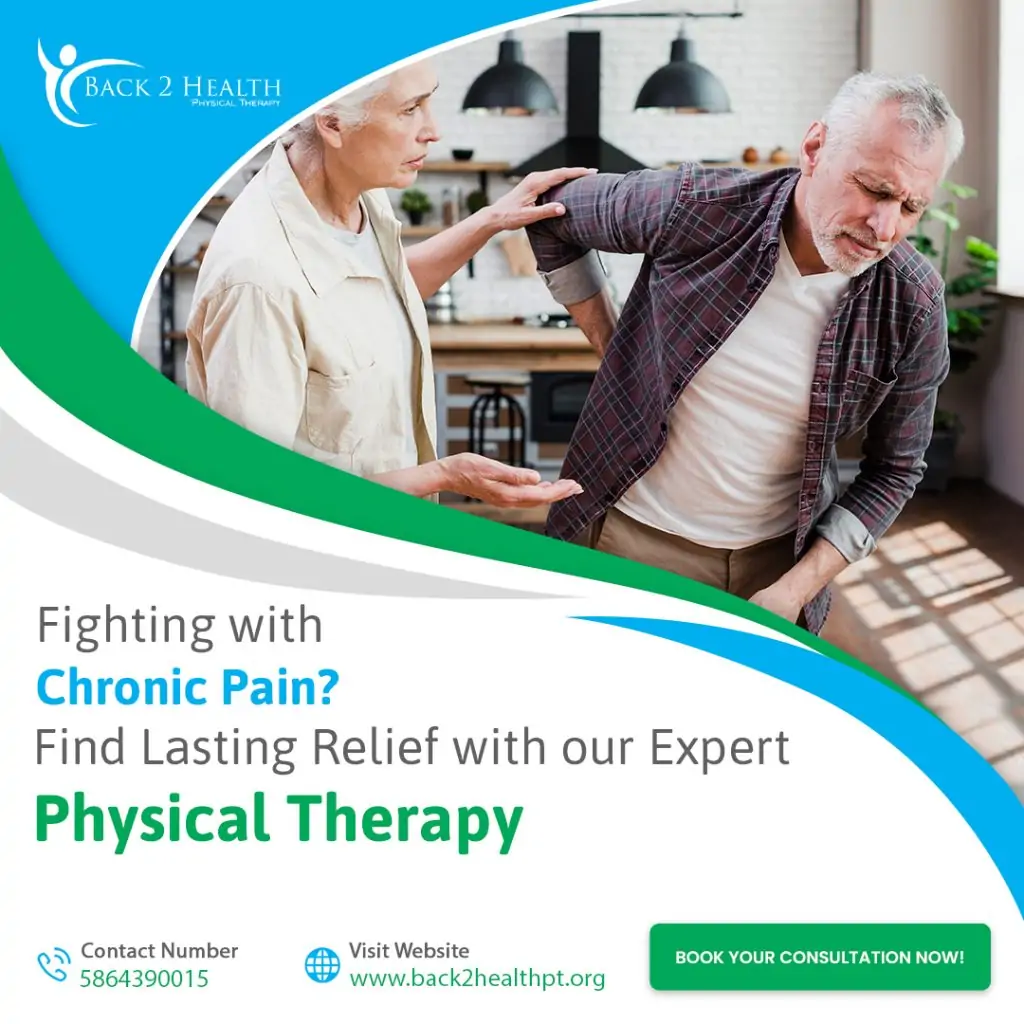Chronic pain is a convoluted ailment that plagues millions of people around the globe, frequently causing loss of physical and emotional stability. Chronic pain can be troublesome to manage, and there are numerous non-invasive techniques available that can relieve discomfort and improve your quality of life. In this blog, we will look at ten of the most powerful chronic pain coping techniques that do not involve clinical or surgical interventions.
Physical Therapy
Physical therapy is a cornerstone for chronic pain relief in Michigan. It aims to help you regain movement and function with bespoke exercise programs and therapeutic techniques. An experienced physical therapist can tailor a therapeutic plan to each individual’s pain concerns.
- Customized workout routines aimed at enhancing strength and flexibility.
- These consist of manual therapy, therapeutic exercise, and modalities such as ultrasound.
- To assist in improving physical function and reducing pain over time.
Mindfulness and Meditation
Chronic pain is a common and debilitating problem, and mindfulness and meditation practices have emerged as effective tools to help people cope with chronic pain. These methods help individuals centre themselves in the moment, relax and move away from stressors that can make pain symptoms worse.
- Emphasizes mindfulness of the present moment to control pain perception.
- Calms your mind and helps reduce pain intensity
- Enhances emotional health and coping skills.
Cognitive Behavioral Therapy (CBT)
Cognitive Behavioral Therapy (CBT) is also a psychological approach, which focuses on re-framing any negative thought patterns that people may have surrounding their chronic pain. Through this methodology, CBT enables patients to reshape their coping strategies, leading to an enhanced quality of life.
- Helps reframe negative thoughts about chronic pain.
- Learning to feel better teaches you to cope with your emotions.
- Improves patient empowerment and contributes to overall quality of life.
Acupuncture
Acupuncture is an ancient practice that involves insertion of fine needles into precise points on the body. This approach is thought to enhance the flow of energy and facilitate the body’s natural healing processes, which can be effective for different kinds of chronic pain.
- It is a laying of thin needles at specific points on the body.
- Promotes the natural flow of energy and stimulates the body’s healing processes.
- For lower back pain, migraines, and arthritis.
Massage Therapy
As a hands-on method, massage therapy can effectively relieve muscle tension and promote relaxation. With regular sessions, people can learn to manage chronic pain by being worked on specific areas of pain and through the overall improvement of wellness.
- Reduces muscle tension and increases circulation.
- Helps Relax and Improves Body Awareness
- Deep tissue therapy or myofascial release might be especially helpful techniques.
Cold and Heat Therapy
Applying hot and cold is an easy to do home remedy for chronic pain. These therapies can be used within everyday life to help reduce many kinds of discomfort.
- Cold therapy decreases inflammation and dulls acute pain.
- Heat therapy loosens muscles and increases circulation.
- Alternating cold and heat can help offer relief.
Exercise
Management of chronic pain involves an exercise program conducted on a regular basis. Light forms of exercise may help you gain strength, flexibility and overall fitness without making your pain worse.
- Gentle, low-impact workouts like walking, swimming or cycling are advised.
- Causes the release of endorphins, which are natural pain relievers.
- Elevates the mood and promotes the sense of good health.
Dietary Changes
Chronic pain is greatly affected by nutrition. Eating an anti-inflammatory diet may reduce inflammation in the body and help relieve some of the pain symptoms.
- Make meals around fruits, vegetables, whole grains, lean proteins and healthy fats.
- Omega-3 fatty acid-rich foods (such as fatty fish) can be anti-inflammatory.
- Turmeric and other spices are known to have anti-inflammatory benefits.
TENS Therapy
Transcutaneous Electrical Nerve Stimulation, or TENS, is a non-invasive pain relief technique that employs low-voltage electrical currents. This method can be extremely beneficial for those searching for alternative home remedies to help control their chronic pain.
- Applies low-voltage electrical currents to relieve pain.
- Nerve stimulation in the affected area to block pain signalling.
- And portable TENS units can be used at home very conveniently.
Support Groups
Many people living with chronic pain find it helpful to join a support group, which can help take an emotional load off. But through others who are mentally going through similar experiences, create a community and ways to cope.
- Offers comfort from those who understand the plight of chronic pain.
- Provides a space for you to share experiences and coping methods.
- Overcomes the isolation that can occur with chronic pain conditions.
Conclusion
The management of chronic pain relief in Michigan requires a comprehensive, individualized approach. By learning about these non-invasive methods — including physical therapy, mindfulness practices, acupuncture, and changes in diet — one can achieve effective relief from that discomfort and improve their quality of life. Individuals who want more customized treatment plans or additional details on how to successfully cope with chronic pain may consider getting in touch with professionals at a specialized clinic, such as Back 2 Health Physical therapy, that can help develop an all-encompassing plan of action that focuses on healing.



